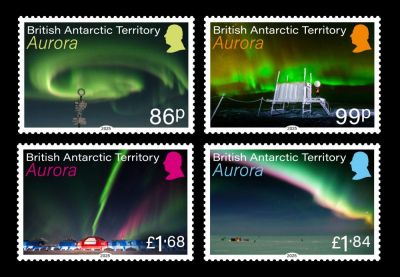
In 1608 Hans Lippershey, a Dutch eyeglass maker, invented the first telescope. In 1610 using such an instrument in Galileo Galilei made many significant discoveries. This included the discovery of sunspots. Sunspots are areas on the Sun with a lower temperature than the surrounding area, so they appear darker. Using such observations, it becomes apparent that the Sun has a distinctive eleven-year cycle of activity. The peak and lower levels of this activity are called the “solar maxima” and “solar minima”. The intensity of auroral displays tend to follow this cycle, with a notable peak at solar maxima.
There is much speculation as to why the Sun has such a distinctive cycle and the effects it has, not just on the aurora but on Earth in general. Aurora have also been observed in the upper atmosphere of the planets Jupiter and Saturn and are also thought to occur in the Venusian and Martian atmospheres.
Auroral displays are caused by the incoming “solar wind”, the intensity of which is also affected by the solar maxima and minima. The solar wind is a stream of electrons and protons that can travel as fast as 750 km/second (450 mph/second). Our planet is surrounded by a magnetic field. When this incoming solar wind reaches the vicinity of the Earth three days later, some particles are attracted by the magnetic field to the upper atmosphere, near the polar regions. These particles collide with atoms in the Earth’s atmosphere, and release energy in the form of light, which produces colourful aurora in the polar regions of the Earth’s atmosphere.
On occasions the Sun can erupt a vast amount of material in the form of a “coronal mass ejection”(CME). An individual CME may comprise over a billion tons of matter which can be accelerated to a speed of several million km per hour. If it reaches Earth, the shock wave of the travelling mass impacts the Earth’s magnetosphere and may cause powerful auroral displays in large regions around Earth’s polar regions.
Aurora occurs around the polar regions in the form of an auroral oval centred on the Earth's magnetic poles. From Antarctica the oval will appear overhead and will extend northwards in the event of increased auroral activity depending on the level of activity on the Sun. If the solar activity is at a higher level, then the auroral oval will extend northwards and aurora may be seen much further north than usual. The oval represents the region where charged particles from the solar wind are funnelled by Earth’s magnetic field into the upper atmosphere. When these energetic particles collide with oxygen and nitrogen molecules in the thermosphere (~100–300 km altitude), they emit light, thus creating auroral displays.
Most auroral displays appear white or light green, and a camera will however more detail and colour. Red and other colours may also be seen. The green aurora is produced by the collision of particles with oxygen at a height of about 100-150 kilometres. Red aurora is caused by the solar wind impacting oxygen in the upper atmosphere at a height of 200 km or more. Whilst rare yellow, purple and blue auroras are caused by nitrogen.
There are various methods of recording auroral activity. The most common is the Kp index from the German, Kennziffer Planetarischer or Planetary index. The index measures the geomagnetic activity in the polar regions, which, if high, can lead to an auroral display. The Kp-index goes from one to nine. The higher the Kp-index, the greater the intensity of the display and the further north you will possibly see an auroral display. From Halley base a level of 5 or 6 will be overhead.
Following Solar minima in 2018/19 it was anticipated that the next peak would be lower than the 2014 peak. However, it soon became apparent that the projected 2024/25 peak would be substantially higher than the 2013 peak. In October 2025 there was a auroral display at level Kp 9 that has subsequently been regarded as one of the best in nearly 70 years. There was also a similar Kp 9 event display in May 2024.
Aurora can be very elusive and variable in intensity, and often unpredictable. Today, with a profusion of solar observatories and satellites, we are beginning to understand more about the workings of our nearest star.
The four British Antarctic Territory stamps are based on images of aurora observed from Halley Research Station, situated on the Brunt Ice Shelf on the Caird Coast of Coats Land in the eastern Weddell Sea of Antarctica.
The 86p stamp shows a distinctive auroral oval shape. The is not the auroral oval mentioned above, but a common shape of aurora seen at times of intense activity.
The 99p stamp shows green aurora on the horizon with the Halley Station meteorological platform in the foreground.
The £1.68 stamp shows a dramatic green auroral ray over Halley VI Research Station. To the right of the ray is some other colourful aurora.
The £1.84 shows a multi-coloured auroral curtain.
Text by Howard L.G. Parkin MBE. BSc. BEd. FRAS
|
Technical Details |
|
|
Designer |
Bee Design |
|
Photography |
British Antarctic Survey |
|
Printer |
Cartor Security Printing |
|
Process |
Lithography |
|
Stamp Size |
42 x 28mm |
|
Perforation |
13 ¼ x 13 ½ per 2cms |
|
Sheet Layout |
10 |
|
Release Date |
Expected Mid November 2025 |
|
Production Co-ordination |
Creative Direction (Worldwide) Ltd |
